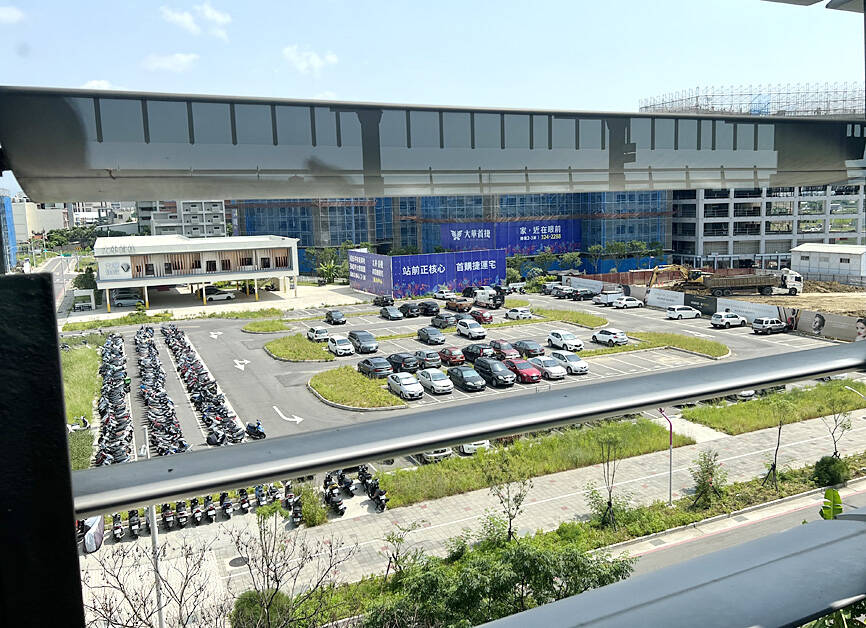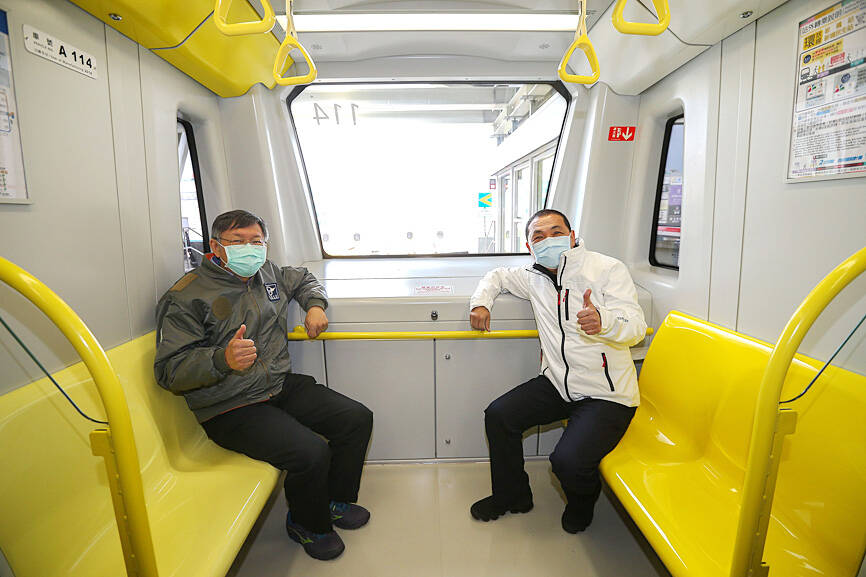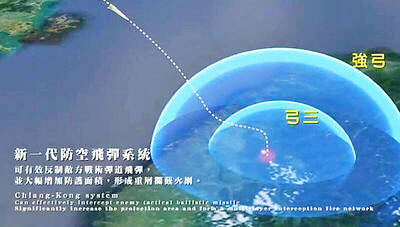The Executive Yuan has proposed spending NT$210.2 billion (US$6.96 billion) over the next two years of the fourth phase of the Forward-looking Infrastructure Development Program, primarily focusing on metropolitan public transportation systems.
The phase four project plans, which have yet to be submitted to lawmakers, would propose spending NT$104.4 billion next year and NT$105.8 billion in 2024, the Executive Yuan said.
They include 27 initiatives for trains, high-speed rail and MRT systems, which would be collectively allotted NT$53.8 billion; NT$4.4 billion for urban and rural development; NT$45.1 billion for water infrastructure; and NT$38.2 billion for digital infrastructure.

Photo provided by Taoyuan Department of Rapid Transit System
The projects also include NT$1.4 billion for childcare facilities in a bid to increase the birthrate, NT$1.4 billion for efforts to improve food safety standards and NT$10.2 billion for professional educational training, along with measures aimed at boosting employment.
The biggest spending item for the rail-related projects is a NT$6.9 billion plan to extend the Taoyuan Airport MRT and develop the areas along that transit line, the Executive Yuan said.
The plans include NT$5.5 billion to electrify the double-track railway running from Hualien to Taitung, and NT$5.26 billion to build a subway system in Tainan.

Photo: CNA
The proposals also include NT$6.2 billion to build underground rail in Taoyuan, and NT$5.89 billion to incorporate digital technology into the Taiwan Railways Administration (TRA) network.
These projects aim to integrate local trains and the high-speed rail into a seamless public transit system while upgrading TRA systems and improving the quality of its services in the country’s eastern region.
The Special Act on the Forward-looking Infrastructure Development Program (前瞻基礎建設特別條例) was passed by the Legislative Yuan in July 2017 to allow the Cabinet to spend up to NT$840 billion on national infrastructure over eight years.
Phase four projects are funded exclusively through public financing, DGBAS Minister Chu Tzer-ming (朱澤民) said on Friday, adding that NT$70 billion remains from the development program.
Separately, the Ministry of Digital Affairs said its budget for next year is NT$5.7 billion, while another NT$16 billion would be allotted from the infrastructure development program for the ministry to contribute to other government entities.
The funds from the forward-looking program are to cover efforts to upgrade government services, implement infrastructure projects, upgrade industry with digital technology, cultivate talent, close the urban-rural digital gap and help non-profit organizations take advantage of information technology, it said.
The Executive Yuan’s general budget proposal was also finalized on Thursday, in which the Ministry of Culture’s proposed budget for next year is NT$21.22 billion, an increase of 20 percent over this year’s NT$17.76 billion.
The boost to the culture ministry’s budget would be further augmented by the infrastructure program’s funding of NT$2.55 billion next year and NT$2.97 billion in 2024, the ministry said.
The money would be used to promote national languages and traditional arts, preserve cultural heritage, and fund the maintenance and construction of museums, the ministry said.
Its planned public works include improvements to the National Human Rights Museum and Sun Yat-sen Memorial Hall, and building a National Children’s Future Plaza, it added.
Additional reporting by Ling Mei-hsueh and CNA

LIMITS: While China increases military pressure on Taiwan and expands its use of cognitive warfare, it is unwilling to target tech supply chains, the report said US and Taiwan military officials have warned that the Chinese People’s Liberation Army (PLA) could implement a blockade within “a matter of hours” and need only “minimal conversion time” prior to an attack on Taiwan, a report released on Tuesday by the US Senate’s China Economic and Security Review Commission said. “While there is no indication that China is planning an imminent attack, the United States and its allies and partners can no longer assume that a Taiwan contingency is a distant possibility for which they would have ample time to prepare,” it said. The commission made the comments in its annual

DETERMINATION: Beijing’s actions toward Tokyo have drawn international attention, but would likely bolster regional coordination and defense networks, the report said Japanese Prime Minister Sanae Takaichi’s administration is likely to prioritize security reforms and deterrence in the face of recent “hybrid” threats from China, the National Security Bureau (NSB) said. The bureau made the assessment in a written report to the Legislative Yuan ahead of an oral report and questions-and-answers session at the legislature’s Foreign Affairs and National Defense Committee tomorrow. The key points of Japan’s security reforms would be to reinforce security cooperation with the US, including enhancing defense deployment in the first island chain, pushing forward the integrated command and operations of the Japan Self-Defense Forces and US Forces Japan, as

INTERCEPTION: The 30km test ceiling shows that the CSIST is capable of producing missiles that could stop inbound missiles as they re-enter the atmosphere Recent missile tests by the Chungshan Institute of Science and Technology (CSIST) show that Taiwan’s missiles are capable of intercepting ballistic missiles as they re-enter the atmosphere and pose a significant deterrent to Chinese missile threats, former Hsiung Feng III missile development project chief engineer Chang Cheng (張誠) said yesterday. The military-affiliated institute has been conducting missile tests, believed to be related to Project Chiang Kung (強弓) at Pingtung County’s Jiupeng Military Base, with many tests deviating from past practices of setting restriction zones at “unlimited” and instead clearly stating a 30.48km range, Chang said. “Unlimited” restrictions zones for missile tests is

PUBLIC SAFETY: The nationwide distribution campaign aims to enhance society’s overall understanding of threats and bolster defense awareness, an official said The latest edition of the National Public Safety Guide is being mailed to all citizens starting today to foster public awareness of self-defense in the event of war or natural disasters, the Ministry of National Defense said yesterday. “The guides will be disseminated to the public to enhance society’s overall understanding of threats and bolster defense awareness, demonstrating the government’s emphasis on people’s safety and its determination to pursue self-defense,” All-out Defense Mobilization Agency Director Shen Wei-chih (沈威志) said at the ministry’s news conference. The nationwide distribution campaign was planned according to President Lai William’s (賴清德) Sept. 20 directive, he said, adding